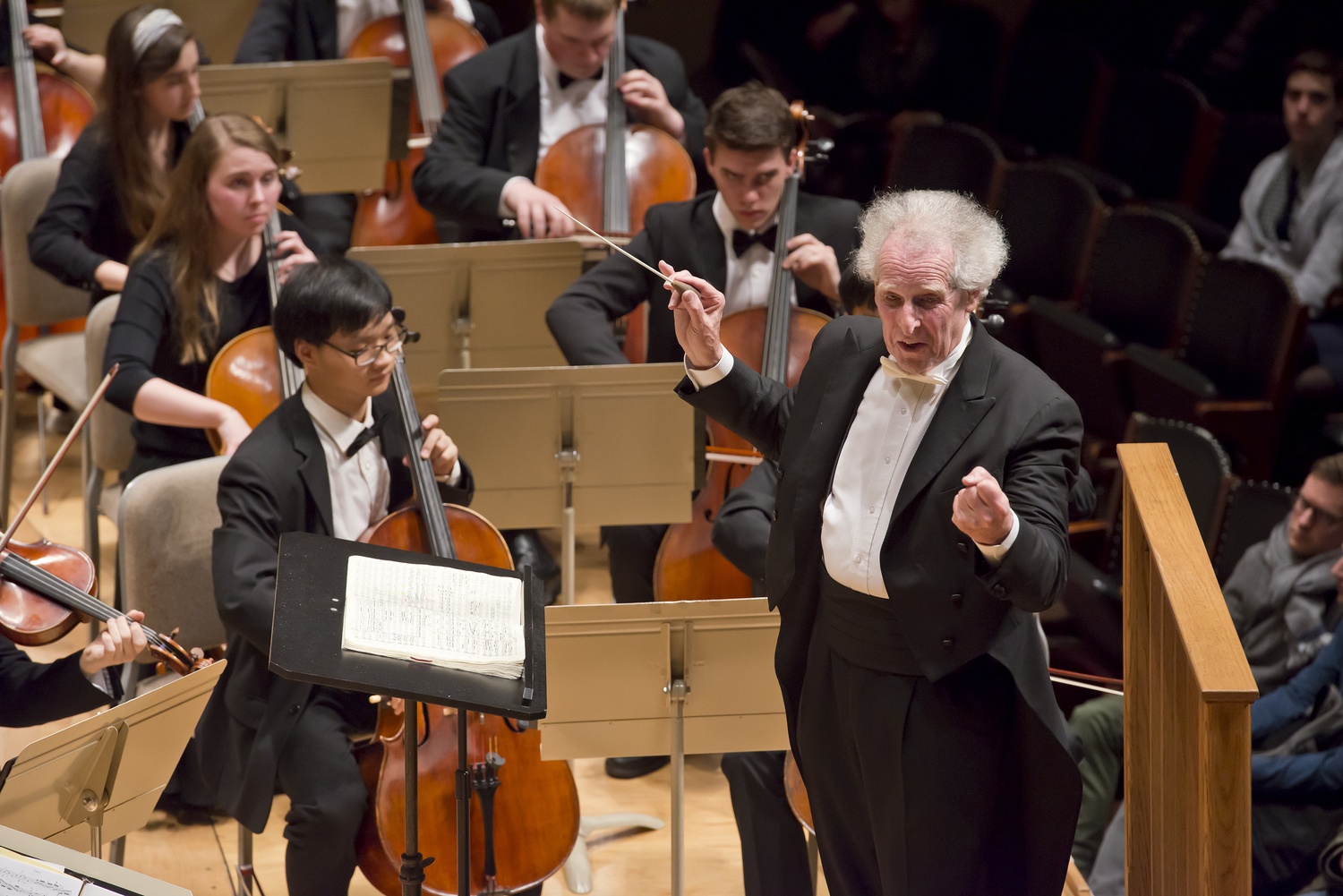
News
HMS Is Facing a Deficit. Under Trump, Some Fear It May Get Worse.

News
Cambridge Police Respond to Three Armed Robberies Over Holiday Weekend

News
What’s Next for Harvard’s Legacy of Slavery Initiative?

News
MassDOT Adds Unpopular Train Layover to Allston I-90 Project in Sudden Reversal

News
Denied Winter Campus Housing, International Students Scramble to Find Alternative Options
Boston Phil. Youth Orchestra Triumphs With Beethoven and Stravinsky

In the age of iTunes and Spotify, it can be easy to think of a piece of music as a collection of 0s and 1s stored on a server thousands of miles away, readily accessible to anyone at any time on computers, cell phones, or even watches. Yet for most of music’s history, each performance of a piece occurred only at a particular place and time to a particular audience: Every incarnation of a composition was unique and irreproducible. In the Boston Philharmonic Youth Orchestra’s performance of Beethoven’s “Eroica” and Stravinsky’s “The Rite of Spring” on Friday, conductor Benjamin Zander and the young musicians brought into focus the sense of temporariness that used to be central to the experience of music. Their performances, brimming with vitality, proved them more than worthy of these two stirring pieces.
Though Beethoven’s symphony and Stravinsky’s ballet are two of the best-known pieces in the classical repertoire, Zander emphasized in his remarks before the concert that his audience would experience something new and unexpected. For the first time in the history of Boston’s Symphony Hall, BPYO performed “Eroica” exactly as Beethoven intended, following all the metronome notations on the original sheet music. Similarly, the orchestra strictly followed the tempi of “The Rite of Spring” as recorded by Stravinsky himself in his piano rolls, many of which posed enormous technical challenges to the musicians. The end of the piece, for instance, was so fast that even Stravinsky himself gave up on his original tempo when he rehearsed the piece’s premiere. BPYO, however, did not back away from it.
What BPYO presented was not just “Eroica” and “The Rite of Spring” but a specific version of them. Each piece became a unique experience shared only by the orchestra and the audience on Friday evening, and the performance inspired new ways of looking at the pieces. The last few minutes of Beethoven’s “Eroica,” for instance, were played significantly faster than in most performances of the composition. While the music sounded more exuberant and energetic, it also lacked the majestic elegance and triumphant solemnity that represent for many listeners not only the soul of the final movement but also the meaning of the symphony’s title—the “Sinfonia Eroica,” or “Heroic Symphony.” Whether this tempo felt more or less satisfying might depend on individual audience members’ preferences, but the performance unquestionably opened up a space in which the audience could hear Beethoven himself, marvel at his work, and wonder what he had in mind as he composed the piece.
“The Rite of Spring,” the second piece of the night, also sounded significantly different from its usual interpretations. While the benefits of obedience to the original tempo indications might be debatable in the case of “Eroica,” Zander’s decision to return to Stravinsky’s tempi unleashed the full power of the ballet. The overwhelming speed of some sections brought out the raw energy in the work of the then virtually unknown but ambitious composer. The orchestra explored the rich musical materials in the composition in a way that would be impossible to fully comprehend in a recording. The imposing drumbeats, the repeated violin chords, and the eerie bassoon solos wove together into a nebula of sound, at once dangerous, mysterious, exciting, intimidating, and irresistibly beautiful. The musicians’ mastery of such a challenging piece was impressive: Their youth, ambition, and drive were well-suited to the composition with which Stravinsky revolutionized Western music in the early twentieth century.
Both pieces received prolonged standing ovations from an audience that had braved new-fallen snow to attend the concert. The BPYO’s unique take on these classical music standards rendered their performance daring, engaging, and ultimately enchanting.
Want to keep up with breaking news? Subscribe to our email newsletter.
